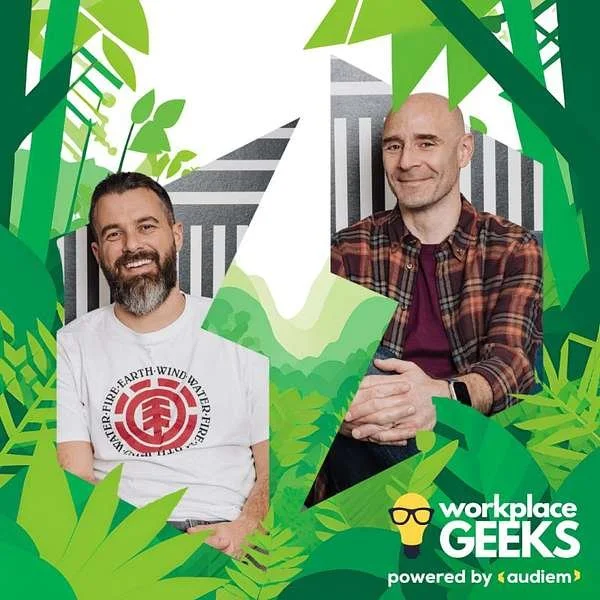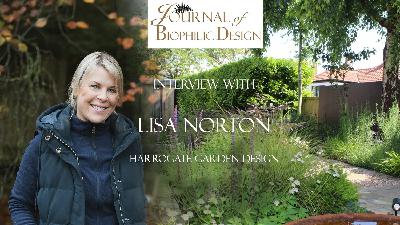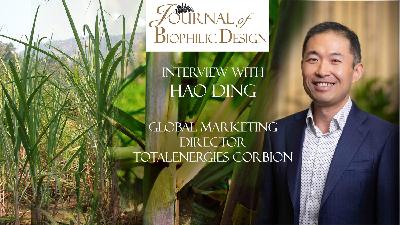Can a Biophilic Strategy redefine our Urban Future?
Description
"The way we've conceived cities for the past 100 years has been far too extractive, far too one-dimensional. We need cities that are more productive, multi-dimensional, and adaptable." Ludo Pittie leads WSP’s 75-strong UK landscape and urban design team, guiding the company’s landscape strategy and design thinking, and is also driving a global WSP exploration of ‘the Future Ready Landscape’ which strives to anticipate future needs, and embed adaptable design practices to create sustainable places that are ready for today and tomorrow.
Urban spaces should be biophilic interconnected systems that prioritise human and ecological wellbeing. This goes beyond traditional sustainability, we need regenerative design, an approach that doesn't just minimise harm, but actively restores and enhances natural systems.
The 15-minute city concept reimagines urban living. "It's about providing essential social needs locally," Ludo explains. "Access to schools, food production, healthcare – all within a 15-minute radius. It's about creating communities that can truly thrive."
Covid-19 unexpectedly accelerated this perspective. Locked down populations rediscovered local green spaces. At the same time our connection to nature has diminished by 60% over two centuries. The pandemic became an unexpected reset button, highlighting the critical importance of accessible, high-quality green environments.
But transforming cities requires more than good intentions. We need for innovative financial frameworks that recognise nature's intrinsic value. Natural capital approaches are emerging, attempting to quantify ecosystem services previously taken for granted. "We haven't been putting a monetary sign on what nature provides," he says. "We've just extracted and taken nature for granted." Plus, the economic benefits of more nature and biophilic placemaking helps provide equal access to high-quality green spaces, which we know can improve public health, reduce NHS pressures, mitigate climate impacts, and create more resilient, socially cohesive communities.
Practical examples are already emerging. Projects like Manchester's Greater Manchester Environment Fund and initiatives in Copenhagen and New York demonstrate how cities can integrate nature-based solutions. In New York, green infrastructure plans showed returns ten times higher than traditional engineering approaches, at a third of the cost.
The future of urban design isn't about uniformity, but about "hyper-local solutions to global system change". Each city, each neighbourhood needs its own nuanced approach, respecting local ecology and cultural distinctiveness. In addition, we should be designing public spaces that balance people, planet, and place; continuing interdisciplinary collaborations, particularly with ecologists and water engineers; and maintaining a spirit of continuous innovation and learning. Community engagement is paramount. Successful urban restoration isn't imposed from above but co-created with local residents. Emerging stewardship models, like community interest companies managing green spaces, show promising alternatives to traditional top-down management.
Looking towards 2050, we have cause to be optimistic. "We've never had so many mechanisms at our disposal," he says. Regenerative design could be the bridge connecting different disciplines, creating holistic solutions to complex urban challenges. Just imagine a world where everyone has a view of nature from where they live, with high-quality green spaces within a 10-minute walk. This would fundamentally reshape our relationship with urban environments.
Ludo will be speaking at the Biophilic Design Conference on 17 November, Click here to find out more and book your online and in person tickets (plus watch on catch up!): https://journalofbiophilicdesign.com/biophilic-design-conference
To find out more about some of the project that Ludo was speaking about in the podcast look at:
https://www.wsp.com/en-gb/hubs/future-ready-landscapes
https://www.wsp.com/-/media/insights/uk/documents/wsp-biodiversity-in-the-city.pdf
https://www.tcpa.org.uk/areas-of-work/new-towns/long-term-stewardship/
https://barkingriverside.london/
https://commonland.com/4-returns-framework/
https://naturetownsandcities.org.uk/
https://www.wsp.com/en-gb/projects/earls-court-development
https://www.c40.org/case-studies/c40-good-practice-guides-copenhagen-cloudburst-management-plan/
https://www.nyc.gov/site/dep/environment/cloudburst.page
https://www.nyc.gov/assets/dep/downloads/pdf/water/stormwater/green-infrastructure/nyc-green-infrastructure-plan-2010.pdf - key take away: “the overall cost of the Green Infrastructure Plan would be approximately $5.3 billion, $1.5 billion less than the $6.8 billion required for the Grey Strategy”.
“After a 20-year period, DEP estimates that New Yorkers would receive between $139 million and $418 million in additional benefits through reduced energy bills, increased property values, and improved health”
























